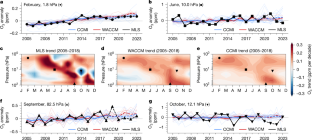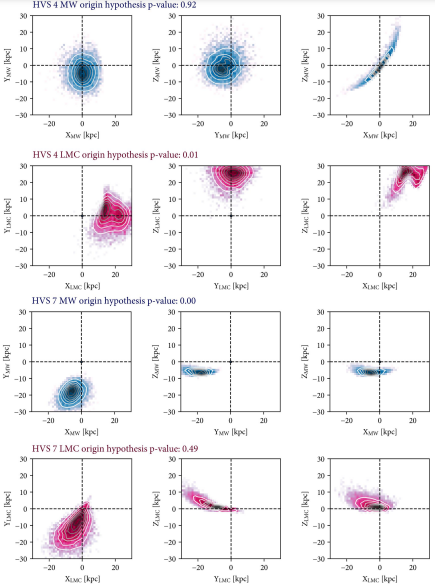2025-03-05 マサチューセッツ工科大学 (MIT)
<関連情報>
- https://news.mit.edu/2025/study-healing-ozone-hole-global-reduction-cfcs-0305
- https://www.nature.com/articles/s41586-025-08640-9
南極のオゾン層の回復の証拠 Fingerprinting the recovery of Antarctic ozone
Peidong Wang,Susan Solomon,Benjamin D. Santer,Douglas E. Kinnison,Qiang Fu,Kane A. Stone,Jun Zhang,Gloria L. Manney &Luis F. Millán
Nature Published:05 March 2025
DOI:https://doi.org/10.1038/s41586-025-08640-9

Abstract
The Antarctic ozone ‘hole’ was discovered in 1985 (ref. 1) and man-made ozone-depleting substances (ODSs) are its primary cause2. Following reductions of ODSs under the Montreal Protocol3, signs of ozone recovery have been reported, based largely on observations and broad yet compelling model–data comparisons4. Although such approaches are highly valuable, they do not provide rigorous statistical detection of the temporal and spatial structure of Antarctic ozone recovery in the presence of internal climate variability. Here we apply pattern-based detection and attribution methods as used in climate-change studies5,6,7,8,9,10,11 to separate anthropogenically forced ozone responses from internal variability, relying on trend pattern information as a function of month and height. The analysis uses satellite observations together with single-model and multi-model ensemble simulations to identify and quantify the month–height Antarctic ozone recovery ‘fingerprint’12. We demonstrate that the data and simulations show compelling agreement in the fingerprint pattern of the ozone response to decreasing ODSs since 2005. We also show that ODS forcing has enhanced ozone internal variability during the austral spring, influencing detection of forced responses and their time of emergence. Our results provide robust statistical and physical evidence that actions taken under the Montreal Protocol to reduce ODSs are indeed resulting in the beginning of Antarctic ozone recovery, defined as increases in ozone consistent with expected month–height patterns.



